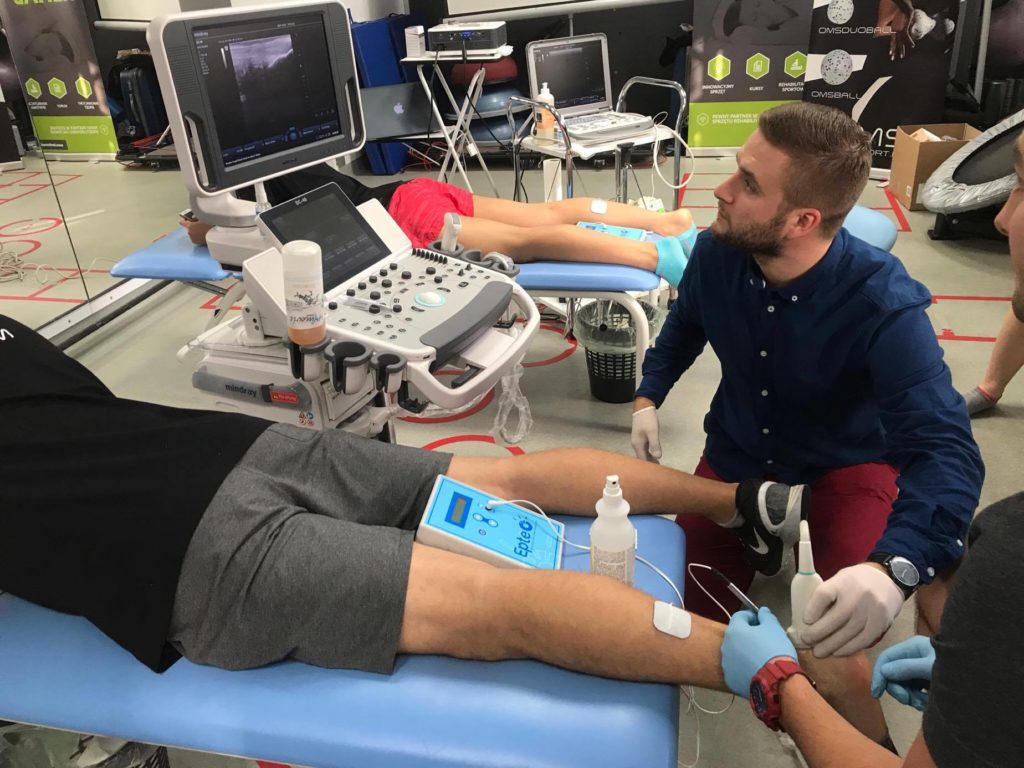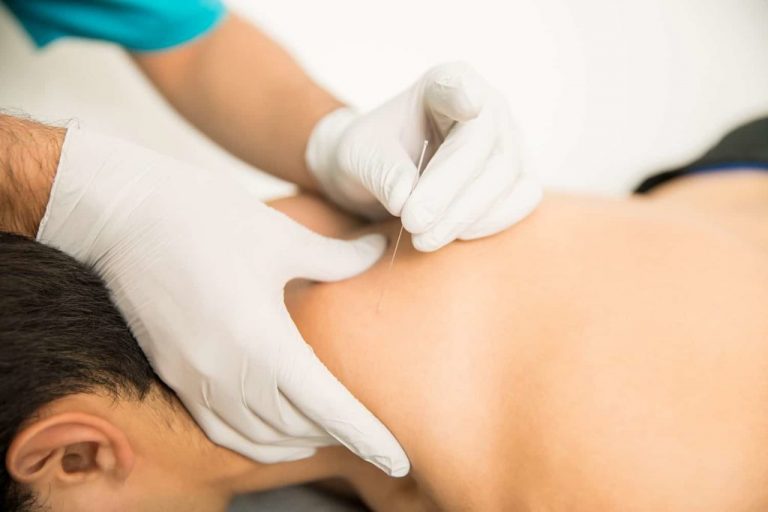In recent years, the popularity of dry needle has gained popularity among both therapists and patients. Although the name itself is not very encouraging, more and more people are willing to take part in the procedures and courses. EPTE percutaneous electrolysis is a novelty among therapies. What connects these treatments and how do they differ? We explain in the article.
EPTE percutaneous electrolysis – what is it?
EPTE percutaneous electrolysis is a therapy that involves injecting a galvanic current directly into damaged tissue using an acupuncture needle. EPTE percutaneous electrolysis therapy is a breakthrough in the treatment of tendinopathy or tendon disorders and has been successfully used in both athletes and patients with typical tendon overload injuries.

What is EPTE percutaneous electrolysis?
After a low-intensity galvanic current is applied to the pathologically altered tendon, the electrolysis process starts. Then a biochemical change in cells occurs and controlled inflammation is triggered, which is necessary to stimulate the healing processes and synthesis of type I collagen.
In other words, percutaneous electrolysis activates the first phase of soft tissue regeneration, that is, the inflammatory phase, which was stopped in all tendinopathies. As a result, the degenerated tissue can turn into new, healthy tissue.
Within 48 hours, tendon pain is reduced and range of motion is increased compared to before surgery. It is important that during this time you do not use anti-inflammatory drugs or local cooling, for example, with ice or gel compresses. However, eccentric exercises are recommended after EPTE therapy to aid in the tissue regeneration process.
Who is this treatment for?
The main recommendation for percutaneous electrolysis therapy is tendinopathy covering the following structures: supraorbital tendon, Achilles tendon, wrist extensor tendons, patellar ligament, plantar fascia.
Dry needle – what is it?
Dry needle is a trigger point method using specially designed needles (the same needles used for percutaneous electrolysis).
These trigger points are found mainly along the myofascial stripes. They are characterized by high sensitivity and tenderness, causing pain symptoms both local and radiating to distant structures of the body.
Trigger points can also appear in tissues other than muscle, joint capsules, ligaments, or adipose tissue, among others. In addition to pain, they often cause limited mobility, stiffness, or muscle weakness.
What is dry point?
A dry needle is the stimulation of nerve endings at a given point of the drainage by piercing a needle that irritates them. This leads to the formation of a nerve impulse that travels to the spinal cord and then goes into muscle fibers with excessive tension. The induced impulse triggers a local contraction response in the muscle, which leads to relaxation and therefore a decrease in pain.

For whom?
Recommendations for use dry needle is mainly a trigger therapy, but it can also be used in other cases, such as: back pain syndromes, tension headaches, tendinopathies, i.e. various types of tendon disorders (as in the case of percutaneous) electrolysis).
Dry Needle Course
To be able to administer dry needle therapy, you must also take a course in this method. There are several courses on the market that usually take 2-3 days. For those who prefer dry needles, we also recommend that you familiarize yourself with the EPTE method of percutaneous electrolysis. It can be a great addition to any therapist’s workshop.
Comparison of two methods
To summarize briefly, these techniques certainly combine the use of needles for therapeutic purposes and the need for appropriate training.
Mechanisms of action and induced biological effects, as well as various fields of application of therapy. In the case of EPTE, these are mainly tendons, and in the case of dry needling, they are mainly trigger points (myofascial structure). Both methods can be used to treat tendinopathy, but for these conditions much better results are achieved with EPTE percutaneous electrolysis.
